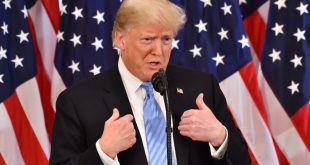Federal Reserve official said on Tuesday the central bank’s top goal is to reduce soaring inflation, and she expressed confidence the central bank can moderate price pressures without triggering an economic downturn.
“Inflation is too high,” said Fed governor Lael Brainard, who is awaiting Senate confirmation to serve as the Fed’s vice chairwoman. “Getting inflation down is going to be our most important task,” Brainard said, speaking Tuesday at The Wall Street Journal Jobs Summit, as the central bank is raising interest rates as part of its most aggressive effort in decades to curb price pressures.
The moderation in some measures of US inflation was welcome in March but it would be a good idea to see if the decline continued in coming months before reading too much into it, said Brainard, noting that “core” inflationary pressure moderated in March by more than she had expected.
“We are doing that by tightening monetary policy methodically, and it is through a series of interest rate increases as well as beginning that balance sheet runoff,” Brainard said Tuesday in a live-streamed interview at a Wall Street Journal jobs summit. She said a decision on the balance sheet “could be as soon as May, which would lead to reductions in that balance sheet starting in June.”
Fed officials increased interest rates by a quarter point in March and signaled they expect to keep hiking all year, while starting to shrink their bloated balance sheet next month. Since then, officials have said this tightening cycle will be faster than in previous economic recoveries, including by raising rates in larger 50 basis-point steps if necessary, to curb surging inflation.
“In terms of exactly what the right pace of that set of increases in the policy rate from meeting to meeting, I don’t really want to focus on that,” she said. “But I would just say the combined effect will bring the policy stance to a more neutral posture expeditiously later this year,” Brainard added, referring to the level of rates that neither speed up nor slow down the economy. She noted that Fed communications have tightened financial conditions in longer-term financing markets as well.
Brainard said the waning of fiscal stimulus, slower international growth, and tighter financial conditions should start to slow overall demand and reduce the level of job openings while labor supply continues to pick up. That describes the “soft landing” scenario officials presented in their latest forecasts, which shows little increase in unemployment through their tightening campaign.
The quarterly projections show interest rates rising to 1.9% by the end of 2022 and 2.8% by the end of next year, according to the median estimate, while the neutral rate is seen around 2.4%. Unemployment, which stood at 3.6% last month, is seen at 3.5% at the end of this year and next.
She cautioned that any forecast must encompass high uncertainty. “I do expect the combined effect of moving the policy rate to a more neutral level and commencing balance sheet reduction to have the effect of bringing inflation down, seeing some moderation in demand while the supply side catches up,” Brainard said. “There is quite a bit of capacity for labor demand to moderate among businesses by actually reducing job openings without necessitating high levels of layoffs.”
US consumer prices rose 8.5% in March from a year earlier, marking the biggest increase since 1981. The war in Ukraine has raised food and energy costs, pushing headline inflation further away from the Fed’s 2% target. US central bankers, by their own admission, were slow to react and are now viewed as moving with determination to catch up.
Brainard said the moderation in prices without food and energy components, which she said reflects the strength of underlying demand, was more than she expected on a month-over-month basis in March. “It is notable that core goods, which has been the source of an outsized amount of core inflationary pressure, moderated more than I had anticipated,” she said. “It’s very welcome to see the moderation in this category. And I will be looking to see whether we continue to see moderation in the months ahead.”
Minutes of their March 15-16 meeting showed that “many” officials would have preferred a half-point move but wanted to wait to see how Russia’s invasion of Ukraine impacted the economic outlook. The minutes showed that many said one or more half-point rate increases “could be appropriate” if inflation pressures remained elevated.
Financial markets are pricing accordingly with futures traders betting on a high probability of a 50 basis-point hike in the Fed’s main policy rate at its May 3-4 meeting.

 Noor Trends News, Technical Analysis, Educational Tools and Recommendations
Noor Trends News, Technical Analysis, Educational Tools and Recommendations




